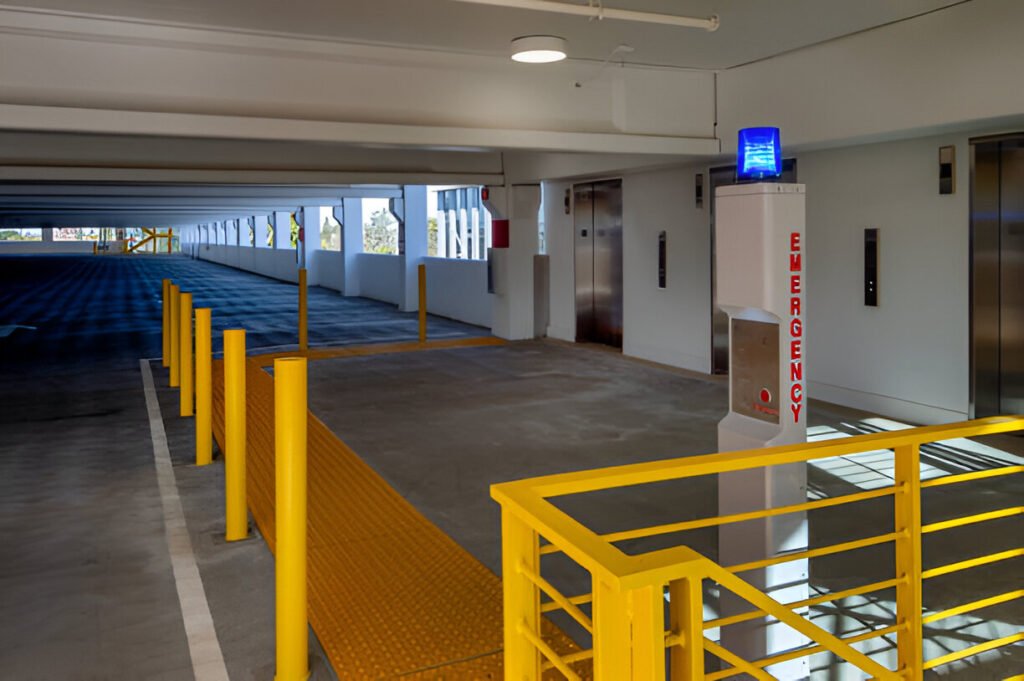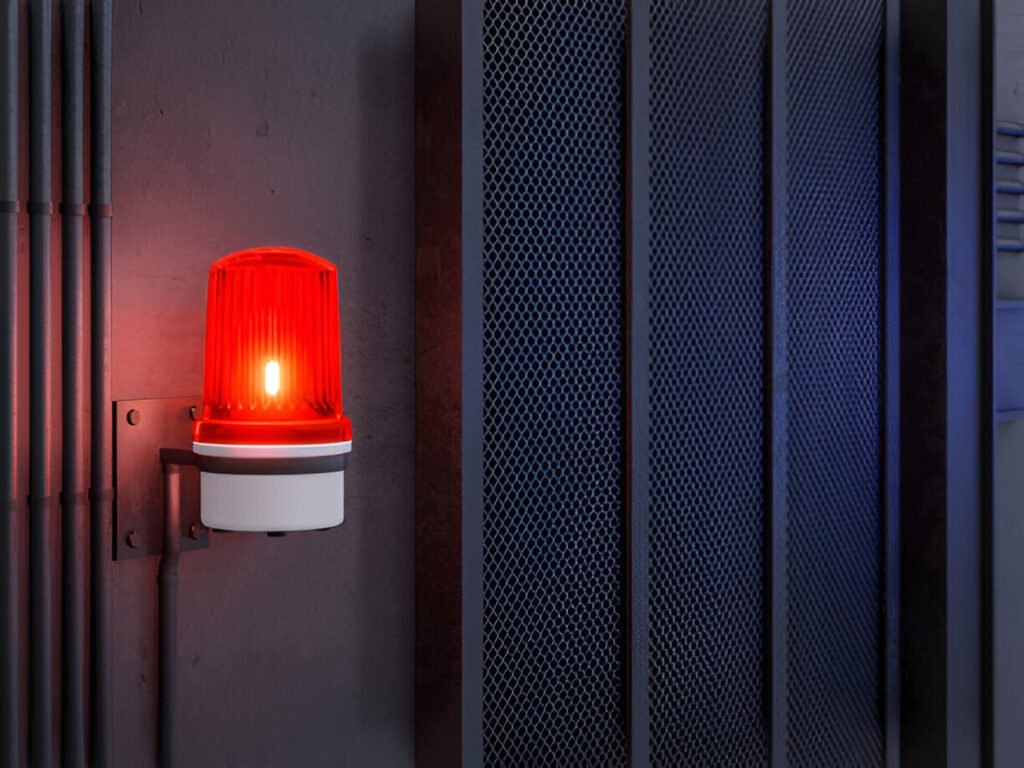Commercial Emergency Lighting Test London
Pricing Plan
Commercial Emergency Lighting Services
Need more help or consultations?
We’re here to help with all your landlord safety needs. Whether you have questions about our services or need to schedule an inspection, our team is ready to assist you.
When it comes to commercial emergency lighting tests in London, you can’t afford to overlook the importance of compliance and safety. These tests are not just legal requirements; they play a pivotal role in protecting lives during emergencies. You might think you have everything covered, but do you fully understand the intricacies of testing frequencies and the different types of systems available? Understanding these elements is essential, especially when considering the potential consequences of neglect. The implications could affect not only your operations but also your bottom line. So, what should you know next?

Importance of Emergency Lighting
When an emergency strikes, you can’t afford to be left in the dark. Emergency lighting is essential for guaranteeing safety and facilitating swift evacuations. In a crisis, every second counts, and having a reliable lighting system in place can mean the difference between chaos and order.
You’ve invested in your commercial space; now, protect it and everyone in it. Effective emergency lighting illuminates escape routes, exits, and critical areas, enabling occupants to navigate safely. It’s not just about visibility; it’s about instilling confidence that people can evacuate without hesitation.
When the power goes out, or smoke fills the air, those lights become your lifeline. Moreover, emergency lighting systems must be regularly tested and maintained to verify they function correctly when needed. This proactive approach minimizes risks and demonstrates a commitment to safety that can enhance your organization’s reputation.
Don’t underestimate the importance of emergency lighting. It’s not just a regulatory requirement; it’s a cornerstone of an all-encompassing safety plan. By prioritizing this aspect of emergency preparedness, you’re taking the necessary steps to protect lives and safeguard your business’s future.
Key Takeaways
- Ensure compliance with the Regulatory Reform (Fire Safety) Order 2005 and BS 5266-1 for emergency lighting testing in London.
- Conduct monthly functional tests and annual full discharge tests to verify emergency lighting performance and compliance.
- Document all testing activities to demonstrate compliance and safeguard against legal penalties and increased liability risks.
- Upgrade to energy-efficient LED emergency lights to enhance reliability and reduce operational costs while ensuring safety.
- Consider hiring certified electricians for professional assessment and audits of your emergency lighting systems in commercial spaces.
Safety Assurance
Legal Compliance
Peace of Mind
Preventative Maintenance
Legal Requirements in London
Understanding emergency lighting’s role in safety is just the beginning; you also need to be aware of the legal requirements governing these systems in London.
The Regulatory Reform (Fire Safety) Order 2005 mandates that commercial buildings must have adequate emergency lighting to guarantee safe evacuation during emergencies. This means your lighting must illuminate escape routes, exits, and any areas where people may gather during a crisis.
Additionally, the British Standards Institution’s BS 5266-1 outlines specific design, installation, and maintenance standards for emergency lighting systems. You’re required to perform risk assessments to determine the necessary level of illumination and coverage based on your building’s layout and occupancy.
It’s vital to verify your emergency lighting is regularly tested and maintained. This includes monthly function tests and annual full discharge tests, ensuring the system is always ready when needed.
Non-compliance can lead to severe penalties, so staying informed about these regulations is essential
Testing Frequencies and Guidelines
To guarantee your emergency lighting system functions effectively in a crisis, regular testing is essential. You should conduct monthly functional tests to confirm that all units activate properly when needed. During these tests, illuminate each light for a minimum of 30 seconds to affirm they operate as intended.
In addition to monthly checks, perform a full duration test annually. This means running your emergency lights for their full rated duration, typically three hours. This thorough test verifies that the batteries and circuits can sustain power for the required time.
Document all testing activities meticulously. Record the date, time, and any issues observed during testing. This not only helps maintain compliance with regulations but also aids in identifying trends or recurring problems that may need addressing.
Be aware of the manufacturer’s guidelines, as different systems might’ve unique requirements. It’s crucial to familiarize yourself with these specifications to confirm you’re meeting all necessary protocols.


Consequences of Neglecting Tests
Neglecting tests on your emergency lighting system can lead to dire consequences that put both safety and compliance at risk.When you fail to conduct regular checks, you’re not just risking your property; you’re endangering lives.Here are four critical consequences of ignoring these tests:Increased Risk of Injury: In an emergency, non-functional lighting can lead to accidents, resulting in serious injuries.
Legal Repercussions: Non-compliance with safety regulations can lead to fines or legal action against your business.
Financial Loss: If an incident occurs due to inadequate emergency lighting, you could face costly lawsuits and damage to your reputation.
Insurance Complications: Neglecting tests may void your insurance coverage in case of a claim, leaving you financially vulnerable.
Types of Emergency Lighting Systems
Regular testing is essential for guaranteeing your emergency lighting system works properly, but knowing the different types of systems available can help you choose the right one for your facility.
There are three primary types of emergency lighting systems to take into account: maintained, non-maintained, and standalone.
Maintained systems operate continuously, providing illumination under normal conditions and during emergencies. This type guarantees visibility at all times, making it ideal for areas where safety is paramount.
Non-maintained systems stay off during normal operations and activate only during a power failure. They’re energy-efficient and suitable for spaces where constant light isn’t necessary but immediate illumination is critical during emergencies.
Standalone systems are self-contained units that don’t rely on a central power source. These units are easy to install and are often used in smaller spaces or remote areas.
They typically include a battery backup that kicks in when the primary power supply fails
Best Practices for Conducting Tests
When you conduct tests on your emergency lighting system, it’s crucial to follow best practices to guarantee reliability and safety. Start by developing a testing schedule that aligns with regulatory requirements and your specific operational needs. Regular intervals—monthly, quarterly, and annually—help guarantee all components function correctly.
Always document your tests meticulously. Record the date, time, duration, and results for each test. This documentation provides a valuable reference for future audits and helps identify recurring issues.
When testing, make sure to simulate real emergency conditions. This means turning off the main power supply to see how quickly and effectively your emergency lights activate.
Involve trained personnel who understand the system and can perform tests without compromising safety. Ensure that all staff are aware of the test schedule, so they’re prepared and can react appropriately. Additionally, inspect all fixtures and batteries regularly, replacing any faulty components immediately.
Finally, consider conducting a review of your testing processes annually. This guarantees that your practices remain aligned with the latest standards and technologies, enhancing the overall performance of your emergency lighting system.
Regular Testing
Conduct monthly and annual tests as per regulations. Document the results meticulously to demonstrate compliance.
Upgrade Equipment
Invest in high-quality LED emergency lights. They’re more energy-efficient and have longer lifespans, reducing overall maintenance needs.
Training Staff
Guarantee your employees understand the emergency lighting system and its importance. Regular training sessions can prepare them for emergencies and proper system usage.
Consult Professionals
Work with certified electricians or safety consultants to evaluate your current setup. Their expertise can identify compliance gaps you might overlook.
Documentation
Proper documentation and retention of EICR reports are mandatory, serving as proof of compliance.
Common Issues and Solutions
While emergency lighting systems are essential for safety, they often face common issues that can compromise their effectiveness.
One prevalent issue is battery failure. Over time, batteries can degrade, leading to insufficient power during emergencies. To combat this, implement a regular testing schedule to replace batteries every few years or as per manufacturer recommendations.
Another issue is inadequate illumination. Sometimes, the placement of fixtures doesn’t adequately light escape routes or exits. As a solution, conduct a thorough assessment of your premises and reposition lights to guarantee ideal visibility.
Wiring faults can also disrupt emergency lighting. Damaged or loose connections may cause lights to malfunction. Regular inspections of wiring and connections will help you identify and rectify these problems before they escalate.
Lastly, dust and debris can obscure light fixtures, greatly reducing their effectiveness. Schedule routine cleaning of all emergency lighting units to maintain their performance.
Expert Tips for Compliance
Guaranteeing your emergency lighting systems function properly goes hand-in-hand with compliance to safety regulations.
You must be proactive in maintaining these systems, as negligence can lead to serious consequences.
Here are four expert tips to help you stay compliant:
- Regular Testing: Conduct monthly and annual tests as per regulations. Document the results meticulously to demonstrate compliance.
- Upgrade Equipment: Invest in high-quality LED emergency lights. They’re more energy-efficient and have longer lifespans, reducing overall maintenance needs.
- Training Staff: Guarantee your employees understand the emergency lighting system and its importance. Regular training sessions can prepare them for emergencies and proper system usage.
- Consult Professionals: Work with certified electricians or safety consultants to evaluate your current setup. Their expertise can identify compliance gaps you might overlook.
Frequently Asked Questions
How Can I Find a Certified Emergency Lighting Tester in London?
You can find a certified emergency lighting tester by researching online directories, checking local regulations, or asking for recommendations from businesses. Contact candidates directly to verify their qualifications and guarantee they meet industry standards.
What Costs Are Associated With Emergency Lighting Testing Services?
Emergency lighting testing services typically involve costs for equipment, technician fees, and potential repairs. You should budget for initial assessments, ongoing maintenance, and any necessary upgrades to guarantee compliance with safety regulations and standards.
Can I Conduct Emergency Lighting Tests Myself?
You can conduct emergency lighting tests yourself, but it’s crucial to understand the regulations and procedures involved. Familiarize yourself with the standards to guarantee compliance and maintain safety for everyone in your facility.
Are There Specific Certifications Required for Testing Personnel?
Yes, there are specific certifications required for testing personnel. You’ll need to guarantee you’re trained in relevant safety standards and regulations to effectively conduct emergency lighting tests and maintain compliance within your organization.
How Do I Maintain My Emergency Lighting Systems Between Tests?
To maintain your emergency lighting systems between tests, regularly inspect the fixtures for functionality, clean lenses, replace faulty bulbs, and guarantee batteries are charged. Document any issues and address them promptly to guarantee reliability.




